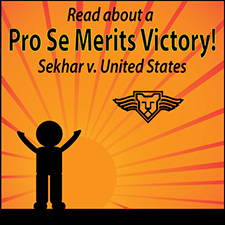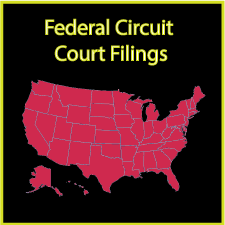How to Writ an Amicus Curiae Brief for the Supreme Court of the United States:
This is a Supreme Court Amicus Curiae Guide that walks you through the requirements and best practices for an Amicus Curiae brief for the United States Supreme Court. It is based on the 2020 Supreme Court Rules. However, this guide is based on a lay interpretation for the rules, and does not constitute legal advice. You can refer to this guide at your own risk and discretion.
WHO CAN FILE AN AMICUS
Anyone or any entity may file an Amicus Brief; however, the Counsel of Record must be a member of the Supreme Court Bar.
CONSENTS TO FILE
Consent for leave to file an Amicus Brief must be provided by all parties or the Court. The consents can arrive in one of three ways:
> A correspondence from parties consenting to the filing of an Amicus Brief (Which we include in our filing package to the court as unbound printouts with the cover letter). You should request consents from all parties as soon as possible. On Amicus Briefs filed at the petition stage, you must request consent at least 10 days prior to your deadline.
> A blanket consent that some or all parties place on the docket.
> A Motion for Leave to File an Amicus Brief which is granted by the Court. This Motion is placed prior to the Amicus Brief and filed concurrently, and must specify how and when you requested consents from the parties and what their response was, if any. You cannot file a motion separately from the Amicus Brief; they are bound together
COVER INFORMATION
> Docket number (or docket numbers if the Court has joined multiple cases)
>The party names as they appear on the docket
> State whether the case is “On Petition” (at the Petition stage) or “on Writ” (at the Merits stage)
> The Lower Court as it appears on the docket
> The Name of Your Amicus (or Amici) [See below]
> The Party Supported [See below]
> The address block or blocks selecting only ONE counsel of record
NAMING YOUR AMICUS (OR AMICI )
You first have to determine whether you are an Amicus Curiae or in an Amici Curiae.
Use Amicus Curiae when the filing party is a singular individual or single organization with official/legal name.
Use Amici Curiae when there is more than one filing party or when there are a group of filers who are filing under a common banner, but where that grouping is not an official/legal title.
Examples:
> Mary Smith – Amicus Brief
> General Motors – Amicus Brief
> Boy Scouts of America – Amicus Brief
> Tom Morris and John Walker – Amici Brief
> Big Ten Bankruptcy Law Professors –Amici Brief
For Amici filers, we recommend the selection of a memorable title. For example, the title “Law Professors,” while descriptive, might be easily confused with other law professors who are filing Amicus Briefs. Therefore, perhaps something more specific like “Midwest Bankruptcy Law Professors” would permit distinction from other documents.
Our formatting standard is no italics on the words Amicus, Amici, Amicus Brief, or Amici Brief. We follow the convention that no italics are used on commonly used and understood Latin words. We also prefer to capitalize the first letters of Amicus Curiae and Amici Curiae.
PARTY SUPPORTED
You must know which party you are supporting, with the most obvious choices being
> in Support of Petitioner(s)
> in Support of Respondent(s)
> in Support of Neither Party
There are some rare cases where there are mixed parties, wherein you support only one party, or where there are joined cases in which Petitioners in different cases are actually adversaries in the outcome of the case. In such a case you can specify the name of a parties you support (e.g. in Support of Smith Corporation in Case ABC and Lyla Gomez in Case XYZ).
CONTENTS OF AN AMICUS BRIEF
Have a Unique Point of View
As stated in the rules, an Amicus Curiae brief should bring to the attention of the Court relevant matter not already brought to its attention by the parties which may be of considerable help to the Court. An Amicus Curiae brief that does not serve this purpose burdens the Court, and its filing is not favored.
The best Amicus Briefs provide a unique point of view based upon the experience and bias of the Amicus. While an Amicus Brief will inevitably partially cover the same ground as the party briefs, you should present a unique point of view/angle to the case. Being different is a positive!
Required Content
There are only 2 to 3 hard requirements on the contents of an Amicus Brief.
Requirement 1: The first section must state the Interest of the Amicus Party. This section is an advertisement for the qualification of the Amicus filer and how the expertise or background of the Amicus filer connects to the subject matter of the underlying case. This is a good place to list titles, awards, papers written, organization size/reach, etc.
Requirement 2: The first page must contain a footnote that states whether counsel for a party authored the brief in whole or in part and whether such counsel or a party made a monetary contribution intended to fund the preparation or submission of the brief, and shall identify every person other than the Amicus Curiae, its members, or its counsel, who made such a monetary contribution. We also like to use this footnote to state whether there are consents on file, or whether blanket consents have been filed.
Example (Mixed blanket/letter consents): The Petitioner has filed a blanket consent with the Court. Amicus Curiae has filed, concurrent with this brief, a written consent to file from Respondent. Per Supreme Court Rule 37.6, Amicus Curiae states that no counsel for a party authored this brief in whole or in part, and no persons other than Amicus Curiae and its counsel made any monetary contribution intended to fund the preparation and submission of this brief.
Requirement 3 (Sometimes): If you do not have consents from all the parties to file, you must file a motion for leave to file that precedes the Amicus Brief. This motion must state a) the timing and means by which you sought consent to file b) the party’s response or non-response; and c) the qualifications/interest of the Amicus filer [Note: this will be similar to the first section of the Amicus Brief which states the interest of the Amicus Curiae. Redundancy is OK.]
Note: The restatement of the Questions Presented is not a standard section in the Rules, and is not one that we prefer to include.
Typical Outline
Motion for Leave to File (if Necessary)
Table of Contents
Table of Authorities
Interests of the Amicus Curiae (with required footnote)
Amicus Brief
Argument 1
Argument 2
Argument 3
Conclusion
Closing Signature Block with clearly identified counsel of record
Appendix – rare; sometimes used when there is a long list of amici
Word Limit
The word count begins immediately after the table of authorities and runs all the way through but not including the closing signature block. You must check the box that also counts footnotes.
Word Count for Amicus Brief at Petition Stage: 6,000 words
Word Count for Amicus Brief at Merits Stage: 8,000 words
Motion for leave to file: 1,500 words
DEADLINES
Note: The Supreme Court Press Does not Calculate Deadlines, nor Warrant the Accuracy of any Information pertaining to Deadlines. It the Client’s Sole Responsibility to Manage to and Meet a Deadline. This Above Deadline Information Below is Illustrative Only.
Amicus at the Petition Stage.
In Support of Petitioner or Neither Party:
Within 30 days after the case is placed on the docket or a response is called for by the Court, whichever is later, and that time will not be extended
In Support of Respondent:
Within the time allowed for fling a brief in opposition
Amicus at the Merits Stage.
In Support of Petitioner or Neither Party:
Within 7 days of the filing of the Merits Brief of Petitioner
In Support of Respondent:
Within 7 days of the filing of the Merits Brief of Respondent
About the Supreme Court Press
The Supreme Court Press is a turnkey, full-service document preparation service for petitioner for a Writ of Certiorari, Responses in Opposition, Amicus Curiae briefs, Merits Briefs, Replies to Exceptions, and all your other filings to the United States Supreme Court. While lovely printed documents will never win your case, improperly prepared documents can certainly lose one! We take care of all your Supreme Court printing needs to free up your time to craft the winning legal arguments.



---Bryan-Krumm.png)


